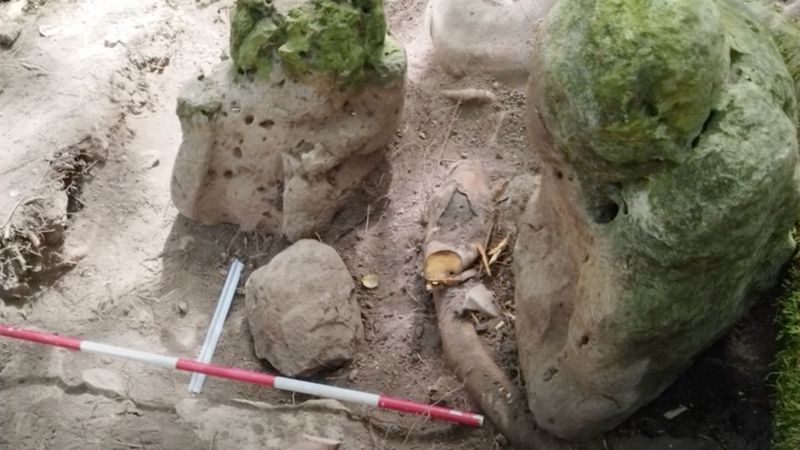In recent antiquity, archaeologists have uncovered an astonishing trove of history by revealing the remains of a nearly 3,000-year-old Mayan complex situated in Guatemala. The discovery includes an array of edifices such as sanctuaries, pyramids, and a remarkable canal system, which may illuminate further aspects of this ancient civilization. The announcement was made through a statement by the country’s culture minister, highlighting the significance of this archaeological find in understanding Mayan history.
This impressive complex spans three distinct sites: Los Abuelos, Petnal, and Cambrayal, all located near the prominent Mayan archaeological site of Uaxactún in the Petén region of northern Guatemala. The ministry’s statement underscores the importance of these locations, drawing attention to the active archaeological work that continues to uncover facets of the past.
The Mayan civilization, known for its cultural depth, emerged around 2000 BC and thrived between 400 and 900 AD, primarily in what is now Mexico and Guatemala. At the height of its development, the civilization produced impressive temples, constructed intricate road systems, elevated pyramids, and other monumental structures. Additionally, the Mayans developed complex writing, mathematical, and astronomical systems, which have fascinated historians and archaeologists for centuries.
The site of Los Abuelos, translating to “The Grandparents” in Spanish, is situated approximately 13 miles or 21 kilometers from Uaxactún. It derives its name from two human-like rock figures discovered at the site, which are believed to represent an ancestral couple. This detail was emphasized by officials, who noted that such relics signify the site’s rich ritualistic importance to the Mayan culture, as mentioned by Luis Rodrigo Carrillo, Guatemala’s vice minister of culture and sports.
According to Carrillo, the presence of these figures, along with several sacred sanctuaries, marks Los Abuelos as a crucial site for Mayan rituals. He further elaborated that this location will help reshape the understanding of Mayan history, signifying its role as one of the region’s most important ritual centers. The ministry even released a video to announce this remarkable discovery, showcasing the historical relevance of the site.
To the east of Los Abuelos lies Petnal, characterized by a striking 33-meter-high (108-foot) pyramid. At its summit, archaeologists have discovered two well-preserved rooms embellished with murals that display a variety of symbolic imagery. This aspect alone highlights the artistic expression prevalent during the Mayan civilization and opens up avenues for further study into their cultural narratives.
Cambrayal, located about three miles or 4.8 kilometers from Los Abuelos, presents yet another notable discovery with the identification of unique water canals within a palace. This feature makes the discovery even more significant, demonstrating the architectural ingenuity of the Mayan engineers and their understanding of hydrology, something not previously documented to this extent in the region.
These discoveries suggest the existence of an urban triangle previously unknown to historians, representing a testament to the greatness of Mayan culture. The ministry of culture stated that these new archaeological findings are pivotal not only for local historical narratives but also for revealing Mayan achievements to the broader world.
This extensive investigation was made possible thanks to a collaboration between Guatemalan archaeologists and their Slovak counterparts, including international experts under the auspices of the Uaxactún Regional Archaeological Project (PARU). Support from Comenius University in Bratislava, Slovakia, illustrates the growing international interest in preserving and uncovering ancient history.
While significant new Mayan sites are rare, ongoing archaeological research coupled with advancements in technology has allowed for the occasional breakthrough. For instance, this April, archaeologists announced another extraordinary find: a mysterious 1,700-year-old altar containing human remains in the nearby ancient city of Tikal, demonstrating that the study of Maya civilization is far from over.
Recent technological advancements such as laser mapping have enabled scientists to identify new sites, revealing complex interconnections between various Mayan cities, towns, and villages. The remarkable advancements in archaeology continue to deepen our understanding of the sophisticated societies that once thrived in ancient Mesoamerica. As new discoveries come to light, they not only add to the historical record but also highlight the importance of collaboration and technology in the pursuit of knowledge about our shared past.



